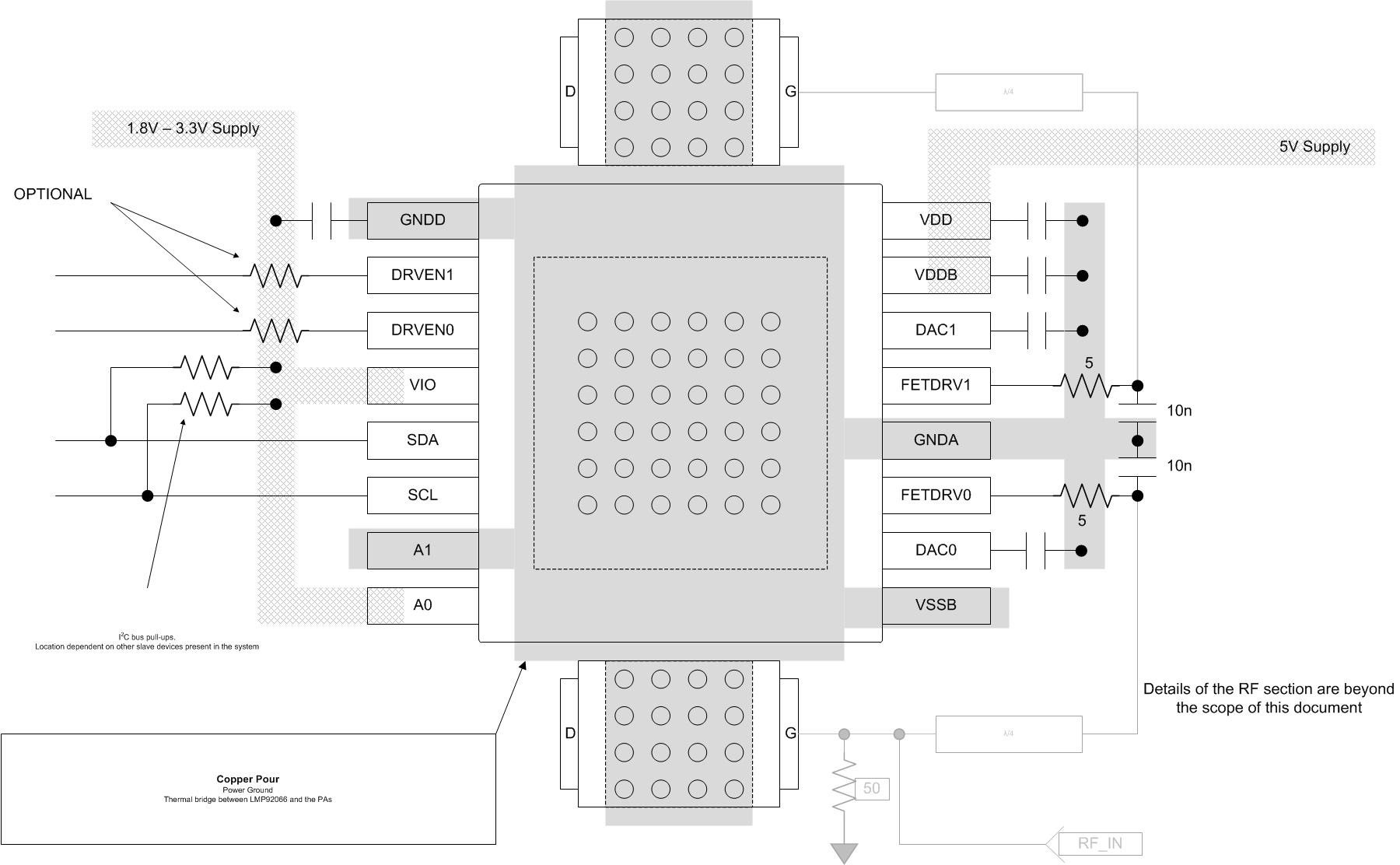SNAS634B March 2014 – January 2016 LMP92066
PRODUCTION DATA.
- 1 Features
- 2 Applications
- 3 Description
- 4 Simplified Schematic
- 5 Revision History
- 6 Pin Configuration and Functions
- 7 Specifications
-
8 Detailed Description
- 8.1 Overview
- 8.2 Functional Block Diagram
- 8.3 Features Description
- 8.4 Device Functional Modes
- 8.5
Programming
- 8.5.1 Temperature Sensor Output Data Access Registers
- 8.5.2 DAC Input Data Registers
- 8.5.3 Temperature Sensor Status Register
- 8.5.4 Override Control Register
- 8.5.5 Override Data Registers
- 8.5.6 EEPROM Control Register
- 8.5.7 Software RESET Register
- 8.5.8 Access Control Register
- 8.5.9 Block I2C Access Control Register
- 8.5.10 I2C Address LOCK Register
- 8.5.11 Output Drive Supply Status Register
- 8.5.12 Device Version Register
- 8.5.13 EEPROM Burn Counter
- 8.5.14 LUT Coefficient Registers
- 8.5.15 LUT Control Registers
- 8.5.16 Notepad Registers
- 8.6 Register Map
- 9 Application and Implementation
- 10Power Supply Recommendations
- 11Layout
- 12Device and Documentation Support
- 13Mechanical, Packaging, and Orderable Information
Package Options
Mechanical Data (Package|Pins)
- PWP|16
Thermal pad, mechanical data (Package|Pins)
- PWP|16
Orderable Information
11 Layout
11.1 Layout Guidelines
The LMP92066 is a device for which the input signal is temperature. The primary path of heat conduction is through the exposed PowerPAD on the underside of the package. The layout should provide direct, high thermal conductivity path between the LMP92066 and the devices controlled by its output:
- Use heavy copper layer as the thermal conduction path. This layer must be also a GND node.
- If the heavy copper layer is not a top layer, use a dense array of vias to connect to both the LMP92066 and the heat sources to maintain high thermal conductivity.
- Place the LMP92066 in the geometric center between the multiple heat sources in order to minimize the “thermal offsets” due to the temperature gradients.
11.2 Layout Example
 Figure 53. LMP92066 Layout
Figure 53. LMP92066 Layout